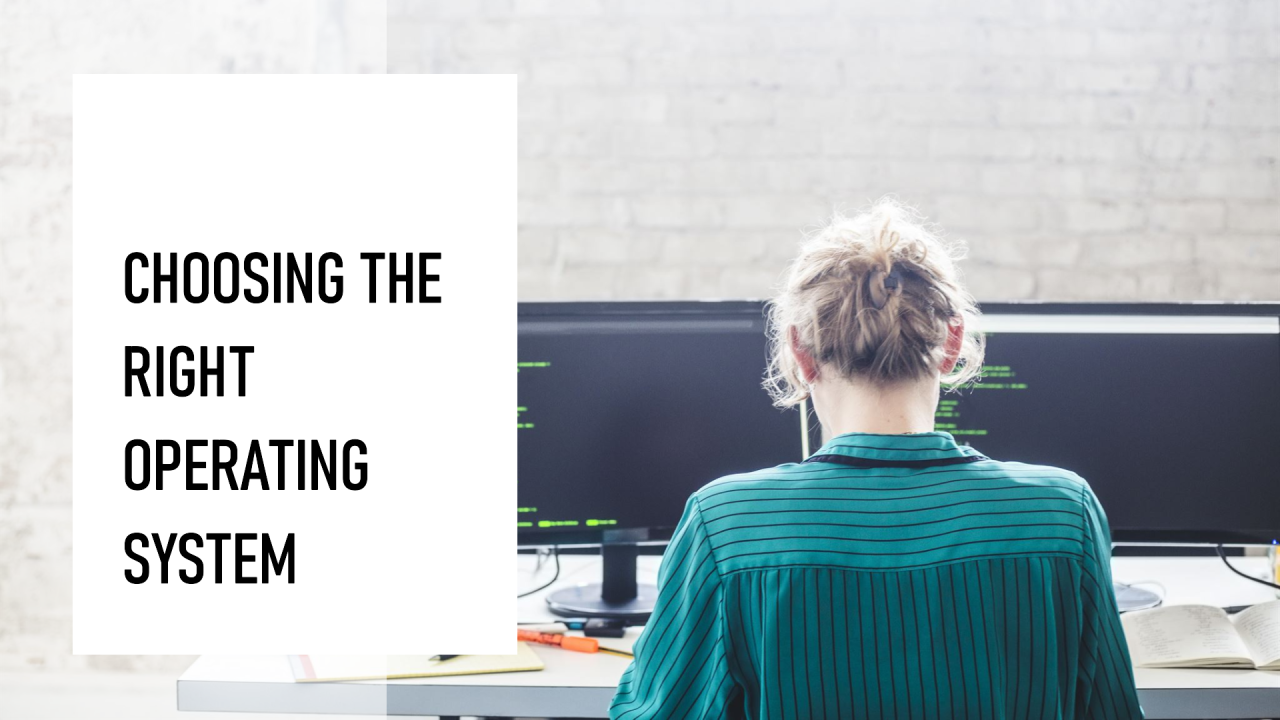Selecting the right operating system (OS) is a crucial decision for any business. The OS serves as the foundation for your IT infrastructure, influencing everything from software compatibility to security and productivity. In this guide, we’ll explore the key factors to consider when choosing an operating system for your business and provide insights to help you make an informed decision.
1. Identify Your Business Needs
A. Business Requirements
- Type of Business: Different types of businesses have varying needs. For example, a tech startup may require a different OS compared to a retail business. Assess your specific requirements based on industry and business functions.
- Software Requirements: Consider the software applications your business relies on. Ensure the OS you choose is compatible with your essential applications and tools.
B. Scale and Growth
- Current Size: Evaluate the current scale of your business and how the OS will support your existing operations.
- Future Growth: Choose an OS that can scale with your business as it grows, accommodating increased users, data, and application demands.
2. Evaluate OS Options

A. Windows
- Compatibility: Windows is known for its broad software compatibility and user-friendly interface. It supports a wide range of business applications and integrates well with Microsoft products.
- Support: Microsoft offers extensive support options, including updates, security patches, and professional assistance.
- Cost: Windows licenses can be costly, but they provide a familiar environment for users and robust enterprise features.
B. Linux
- Customization: Linux offers high levels of customization and flexibility. It is an open-source OS, allowing businesses to tailor the system to their specific needs.
- Cost: Linux is generally free, though some enterprise distributions may have associated costs for support and services.
- Security: Linux is known for its strong security features and stability, making it suitable for mission-critical applications and servers.
C. macOS
- Integration: macOS integrates seamlessly with other Apple products and services, which can be beneficial for businesses using Apple hardware.
- Software Compatibility: While macOS supports many professional applications, its compatibility with specialized software and industry-specific tools may be limited compared to Windows.
- Cost: macOS is only available on Apple hardware, which can be more expensive than other options.
3. Consider Security and Compliance
A. Security Features
- Updates and Patches: Regular updates and security patches are essential for protecting against vulnerabilities. Ensure the OS you choose has a strong track record of timely updates.
- Built-in Security Tools: Look for built-in security features such as firewalls, antivirus protection, and encryption options.
B. Compliance Requirements
- Industry Regulations: Some industries have specific compliance requirements related to data protection and security. Ensure the OS can support and comply with these regulations.
- Data Protection: Consider how the OS handles data protection and privacy to meet your business’s compliance needs.
4. Assess Usability and Support
A. User Experience
- Ease of Use: Choose an OS that is user-friendly and aligns with the skills of your team. A familiar interface can reduce training time and improve productivity.
- Customization: Evaluate how easily the OS can be customized to meet your business needs and workflows.
B. Support Options
- Vendor Support: Consider the level of support provided by the OS vendor. This includes access to technical support, documentation, and community forums.
- Third-Party Support: Check if third-party support services are available, especially if you opt for open-source or less common operating systems.
5. Budget Considerations
A. Licensing Costs
- Initial Costs: Assess the initial costs associated with acquiring the OS, including licenses and hardware.
- Ongoing Costs: Consider ongoing costs for updates, maintenance, and support.
B. Total Cost of Ownership (TCO)
- Long-Term Costs: Calculate the total cost of ownership, including training, support, and potential downtime. An OS with a higher initial cost may have lower long-term expenses if it reduces operational inefficiencies.
6. Test and Evaluate
A. Trial Versions
- Testing: Many OS vendors offer trial versions or demo environments. Use these to test the OS in your business environment and evaluate its performance and compatibility.
B. Feedback from Users
- User Feedback: Gather feedback from your team on their experience with the OS. Their input can provide valuable insights into usability and effectiveness.
Conclusion
Choosing the right operating system for your business involves evaluating your specific needs, considering various OS options, and assessing factors such as security, support, and cost. By carefully analyzing these aspects, you can select an OS that aligns with your business objectives, enhances productivity, and supports your long-term growth.
